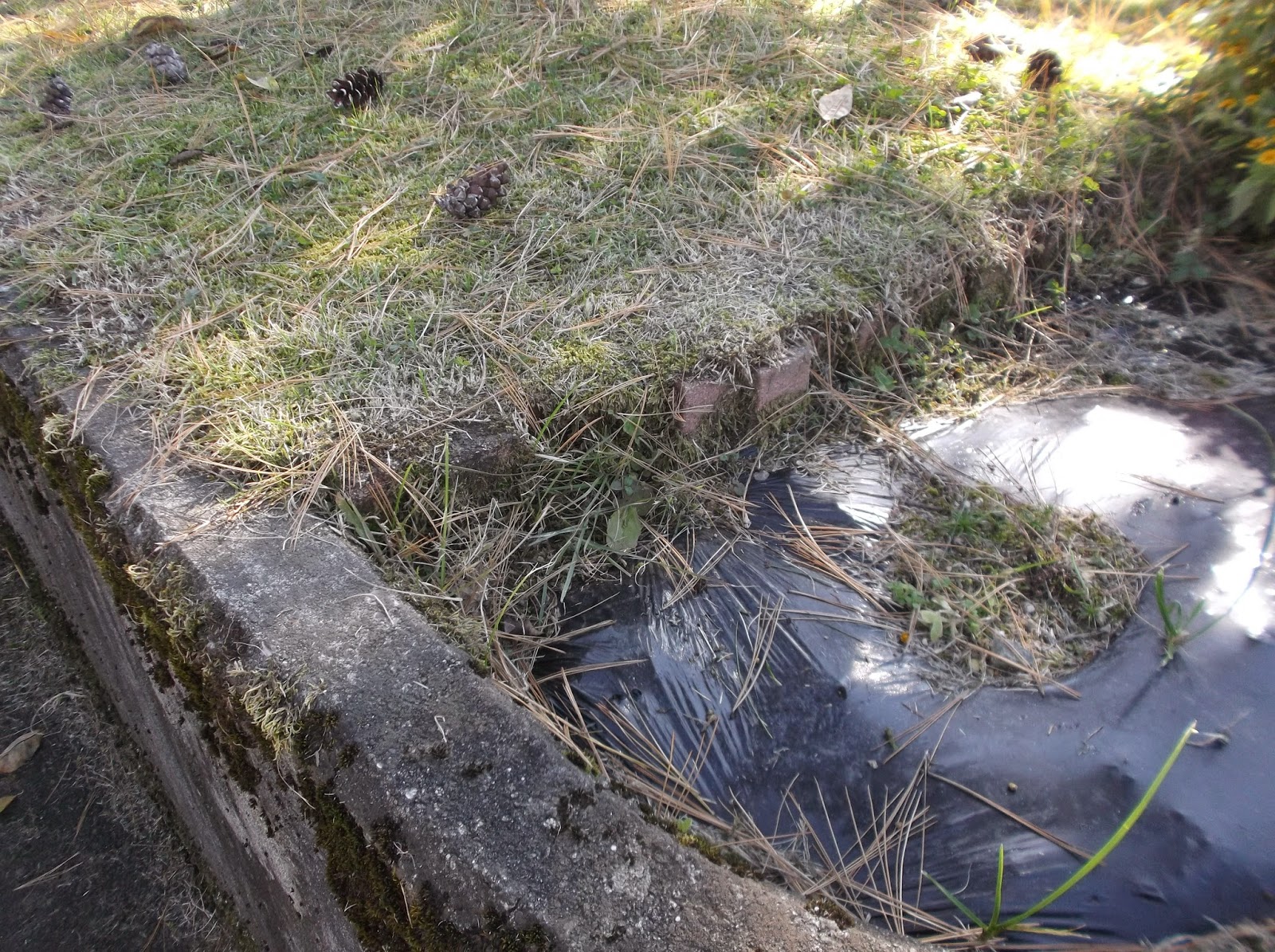On October 25, I went for the fifth mushroom hunt in this season alone. I wanted to find shimofuri shimeji, kuritake, and mukitake among others. It was a little too late for naratake (honey mushroom), called amandare here in the Uonuma region of Niigata.
10月25日、今シーズン5回目のきのこ狩りに一人で行きました。特にシモフリシメジ、クリタケ、ムキタケを見つけたいと思いました。ナラタケ(新潟の魚沼地方ではアマンダレと言う)にはちょっと遅すぎです。
In mountain 1, I was unable to find kuritake, shimofuri shimeji, or mukitake in our secret spots. I was unable to find shimofuri shimeji near the akamatsu (red pine) my son found some several years ago. This season is a bad one for mushrooms.
最初の山では、秘密の場所でクリタケ、シモフリシメジ、ムキタケが見つかりませんでした。数年前、息子がシモフリシメジを少し見つけたアカマツの近くにもシモフリシメジはありませんでした。今シーズンはきのこは不作です。
I spent more than one hour in mountain 1, but was unable to find any edible mushrooms. Then, I went to the trekking course.
最初の山では一時間以上探しましたが、食べれるきのこはみつかりませんでした。次にトレッキングコースに行きました。
On this fallen log,
この倒木(とうぼく)に、
I found some mukitake!
ムキタケを少し見つけました。
Why are mushrooms so shy??? I do wish they would come out and say, "I'm here!"
きのこって何で恥ずかしがり屋なんでしょう?出てきて「ここにいるよ!」と言ってくれるといいんですが。
Mysterious mushroom
奇妙なきのこ
My son says it's ura beni gasa (
Pluteus cervinus). It's edible, but is not particularly tasty.
息子は、ウラベニガサだと言っています。食べれるが、特に美味しいきのこではないそうです。
I found these tiny kuritake (
Hypholoma sublateritium).
As I mentioned in a previous post, kuritake is considered edible in Japan but inedible or even poisonous in Europe.
前に述べたように、クリタケは日本では、食べれるきのこ、ヨーロッパでは食べれない、または毒きのこと考えられています。
According to my son, these are also ura beni gasa.
息子によれば、これもウラベニガサだそうです。
I found one kanoshita (
Hydnum repandum)! Sadly, it was too old to eat.
カノシタを見つけましたが、残念ながら、老菌(ろうきん)で食べれません。
I found some more kuritake.
クリタケをもう少し見つけました。
and this clump of niga kuritake (
Hypholoma fasciculare).
それに、このニガクリタケの群生も。
Although it's poisonous, it's very beautiful to look at.
毒きのこですが、見ているときれいです。
What's this young fungus?
この幼菌(ようきん)は?
My son says it's cha name tsumu take (Pholiota lubrica).
息子によれば、チャナメツムタケ。
I found these on a fallen log. I first thought they were oyster mushrooms or something.
倒木にこのきのこがありました。最初はヒラタケか何かと思いましたが、
they had tubes on their underside instead of gills.
裏側は「ひだ」でなく管孔(かんこう)でした。
My son said something about the mushrooms, but I forgot.
息子がこのきのこについて何か言ってましたが、忘れました。
I went to this log, on which I previously found a large number of tsukiyotake, hoping to find some mukitake there this time,
以前、ツキヨタケを大量にあったこの倒木まで行って来ました。今度はムキタケがあるかと期待したのですが、
but I found none.
ありませんでした。
Then, I went to mountain 2.
次に、2番目の山に行きました。
I almost gave up finding edible mushrooms, when I found them!
食べれるきのこを見つけるのを諦めようと思っていた矢先に、見つけました!
Kuritake!
クリタケです!
Very beautiful!
とてもきれいです!
I found some kuritake scattered on the ground
地面に散らばったクリタケを見つけました。
probably by someone not knowledgeable about mushrooms...
多分、きのこに詳しくない人のせいだと思います...。
Angel wing
スギヒラタケ(カタハ)
Very old. Now that it's declared poisonous, few people pick it.
かなり老菌です。毒きのこになってからは、採る人は殆どいません。
This particular mountain has a lot of moss on the ground, and it's very beautiful.
この山は地面に苔(こけ)がいっぱい生えていて、とてもきれいです。
Seen closely, it may look like a deep forest or jungle.
近くで見ると、深い森かジャングルのようにも見えます。
Finally, I dropped by a secret spot where hatsutake (Lasctarius hatsudake) can appear. I was surprised to see one hatsutake appearing, although it was too old to eat. Hatsutake usually appears in late summer through early fall, on the ground near a pine tree.
最後に、ハツタケが発生する秘密の場所に寄りました。驚いたことに、ハツタケが一つ生えていました。老菌で食べれませんが。ハツタケは通常、晩夏から初秋に、松の木の近くの地面に発生します。
The hatsutake was at the center of this photo.
ハツタケはこの写真の中央にありました。
This is probably my last mushroom hunt in this season. I wish I could find more mukitake.
多分、今シーズンのきのこ狩りはこれで最後です。ムキタケをもっと見つけたかったです。
All the edible mushrooms I picked yesterday will be put to takikomi gohan this evening. Last night, I boiled them all in a pot of water, soy sauce, sake, and mirin.
昨日採った食用きのこは全部、今晩、炊き込みご飯にします。昨晩、水、醤油、酒、みりんを入れた鍋で茹でました。


















































